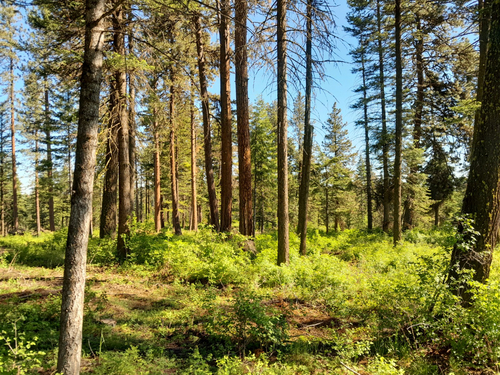Conifer species and forest types in the Intermountain Northwest thrive under diverse soil, moisture, and temperature conditions. Wildfires have historically shaped the diversity of these forests and rangelands. Typically, wildfires would remove non-fire-resistant species and create conditions conducive to the regeneration of plant communities. The presence and distribution of forest types have evolved with the frequency and intensity of historical wildfires. However, unusual wildfire patterns and intensities, along with introduced forest pathogens, are adversely impacting forest composition, density, diversity, and health.
Declining forest health leads to increased tree mortality from insects and diseases, as well as the accumulation of woody fuels that result in exceptionally intense wildfires. Without regular disturbances, forest density grows, intensifying competition for soil nutrients, moisture, sunlight, and space, thereby stressing plant communities. Historically, low-intensity or mixed-severity wildfires would periodically eliminate smaller, fire-sensitive trees and clear dead wood. The surviving trees had more space to grow larger and healthier, mitigating the impact of disease outbreaks and severe wildfires.
Through careful planning and proactive forest management techniques, landowners can enhance or maintain the health and diversity of forests. Management strategies may encompass a combination of non-commercial, commercial, and prescribed fire practices. Factors to consider should include specific goals for forest health, structural and spatial diversity, and objectives related to access, economic considerations, wildfire risk, recreation and scenery, special areas and settings, among others. Management practices might involve various treatments aimed at altering tree density and species composition.
To support your planning, I can provide:
- Expertise in the ecology and management of Intermountain Northwest forests
- Knowledge of various treatment options, their limitations, and available technologies


